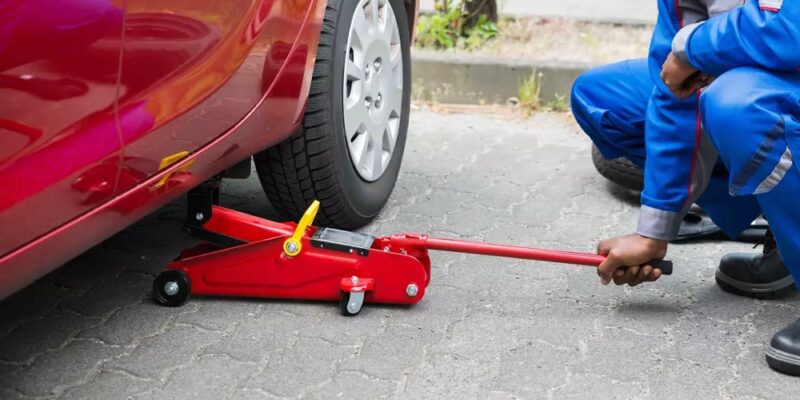
Car jacks are commonly used in the automotive industry and they’re a vital piece of equipment for a range of repair and maintenance jobs such as changing tyres.
When using a car jack, you should always ensure that you know where the car’s jacking points are and that the vehicle is on an even surface. You should also make sure that you carry out any work to the correct safety standards when working under any vehicle.
If you’re making use of a car jack, you’ll need to ensure you select the right one for the task.
Trolley jack
This is often used by professional mechanics in garages and body repair shops and is a safe and stable option for a range of jobs. Its wheels mean it can be easily transported and moved around the workshop as well as secured into the correct position.
You’ll need to make sure the relief valve is closed before inserting the handle to be able to pump the device to the right point. Hydraulic pressure raises the car as you press the handle.
Bottle jacks
The ideal equipment for heavy duty vehicle lifting such as tractors and SUVs, bottle jacks are more compact compared to trolly jacks and be transported relatively easily. These type of car jacks also rely on hydraulics and are operated by pumping the handle.
You can choose from different sized bottle jacks, depending on the weight that you need to lift. It’s important to make sure you use reliable equipment such as bottle jacks from RS Components.
Scissor jack
A scissor jack is operated differently to a bottle jack or trolley jack. Instead of using hydraulics, scissor jacks use a screw and rely on manual operation. They’re often included in vehicles at the point of sale due to their small size and cheap cost.
They work via a screw that joins the two parts of the jack and a saddle that meets the vehicle. To use the jack, the screw is turned to open up the hinges, allowing the jack to be lifted. Turning in the opposite direction decreases the height of the jack.
While they’re a convenient piece of equipment for storing in a car or truck and using in emergency situations, they’re not ideal for heavy-duty applications or professional repairs and maintenance.
If you need to use a scissor jack, for example to change a tyre, you should make sure the vehicle is away from traffic and that you don’t use the jack to position yourself underneath the vehicle. You should also ensure your parking brake is on to prevent your car moving while you’re carry out any emergency repair.
The type of car jack you choose depends on the job requirements and the environment. But most professional mechanics in approved garages choose to work with bottle or trolley jacks to remain safe and get the task done as efficiently as possible.







